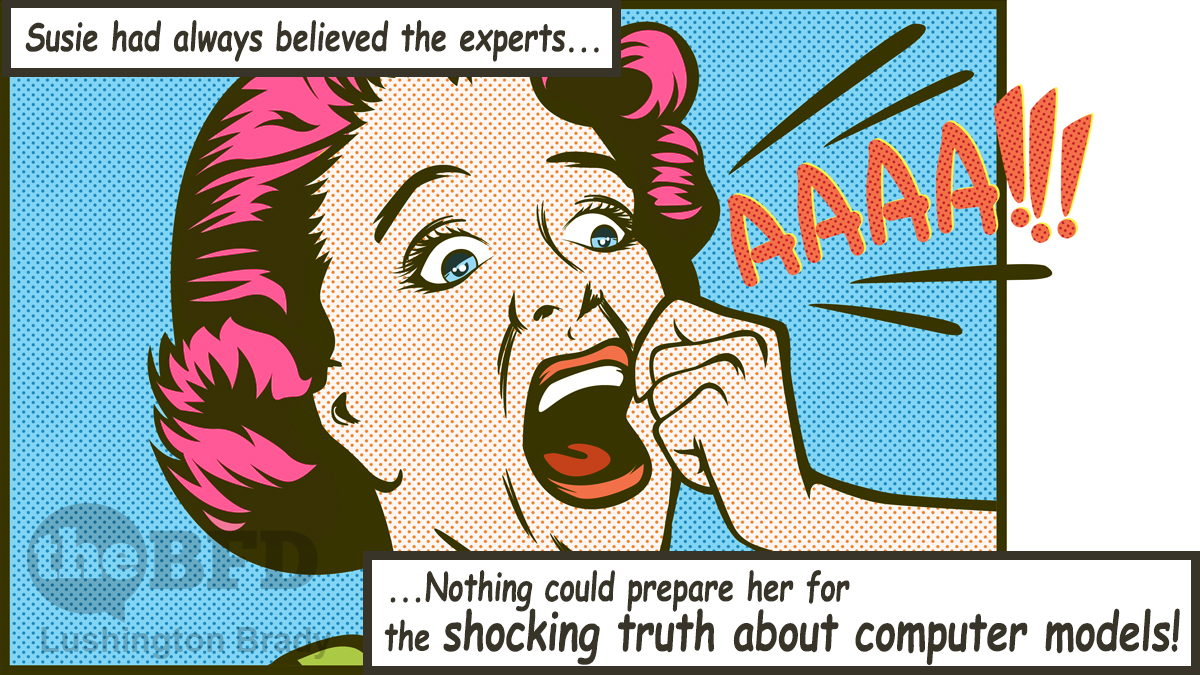Brace yourselves, readers, I’m about to deliver some shocking news: pandemic computer models were wrong! Again!
Now that you’ve picked yourselves off the floor, let us share our astonishment. The models that were wrong about Covid in Britain, the US, and Australia. The self-same models that were completely wrong about BSE and Foot and Mouth in Britain. They were wrong again about the latest Covid-19 outbreak in Australia.
How does this keep happening? It’s enough to make us suspect that computer modelling is nothing but a lot of fanciful mathematical hooey that bears no relation to the real world.
It’s almost enough to start us harbouring niggling doubts that climate models are all they’re cracked up to be, too. But surely not!
But, lest we start harbouring such heretical notions, the modellers are here to reassure us.
Hospitalisations in NSW may not rise to a peak predicted in modelling given how successfully the state brought its Covid-19 case numbers down before restrictions were eased.
Get that? The models weren’t wrong, reality just didn’t match what the models predicted.
But as case numbers rise, there is likely to be a corresponding rise in hospitalisations despite the high level of vaccine coverage.
Well, thanks Professor Obvious. The more cases, the more people will end up in hospital. Whodathunkit.
And just in case you’re thinking they’re just pulling this stuff out of their backsides, they’re experts.
That’s the assessment of biostatistician and epidemiologist Adrian Esterman who successfully predicted the rise in case numbers throughout the Delta wave of infections in NSW and Victoria.
NSW’s total number of cases is closely related to the number of hospitalisations, unlike in Victoria where hospitalisations have remained lower compared to the number of cases.
So, hang on… the model successfully predicted the rise in cases, and cases are closely related to hospitalisations… but hospitalisations did not match the predictions of the model.
Well, that sounds perfectly logical.
But, just to be clear, these are no quibbling differences between predictions and reality.
NSW government modelling indicated that there would be 3434 hospitalisations by late October and 560 people with Covid-19 in ICU. Burnet Institute modelling predicted peak hospital demand of between 2286 and 4016 cases […]
There were 769 Covid-19 cases admitted to hospital in NSW on Monday, with 153 people in intensive care. The number of people in intensive care has decreased steadily from September 21 when 244 people were in ICU.
The Australian
So… actual hospitalisations are between 1/5 and 1/3 of the model predictions. ICU admissions peaked at just half of the model predictions.
If a tradesman consistently did work that cost between three and five times what they’d quoted, you’d pretty soon give them the flick.
But then, tradesmen deal with the real world; academics never have to bother with that sort of nonsense.

Please share this article so that others can discover The BFD









